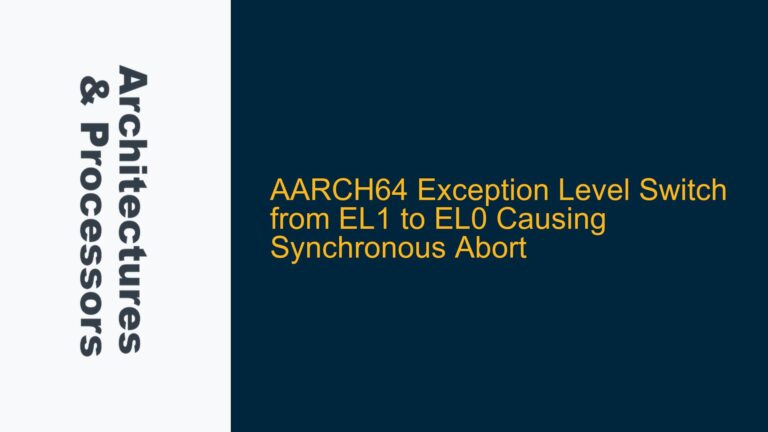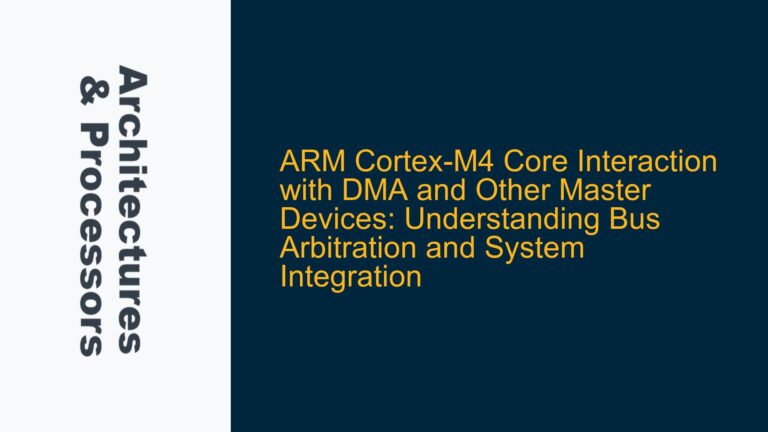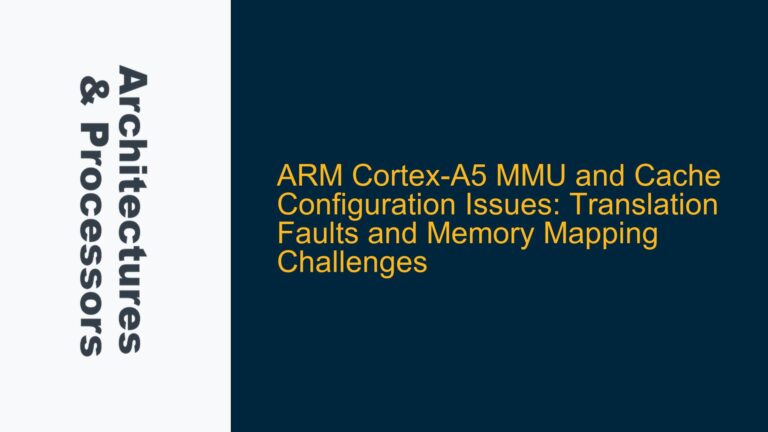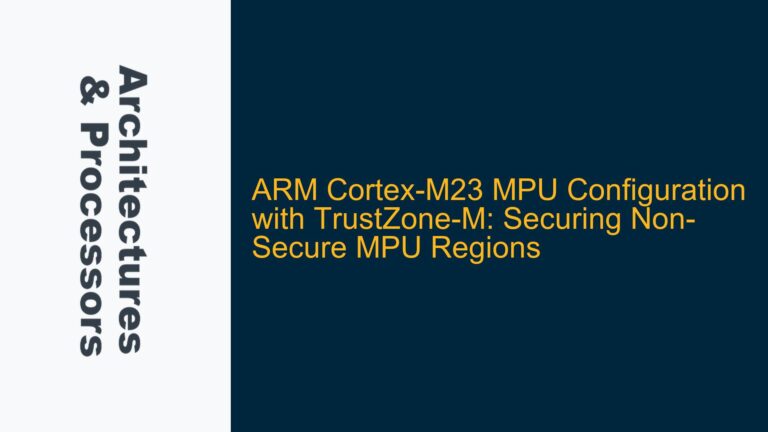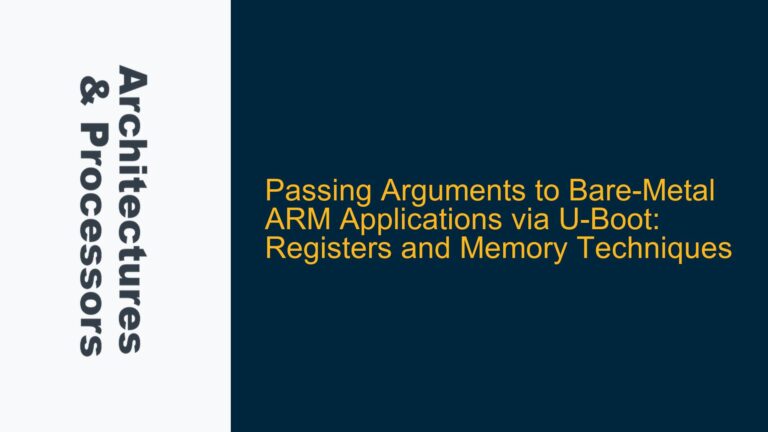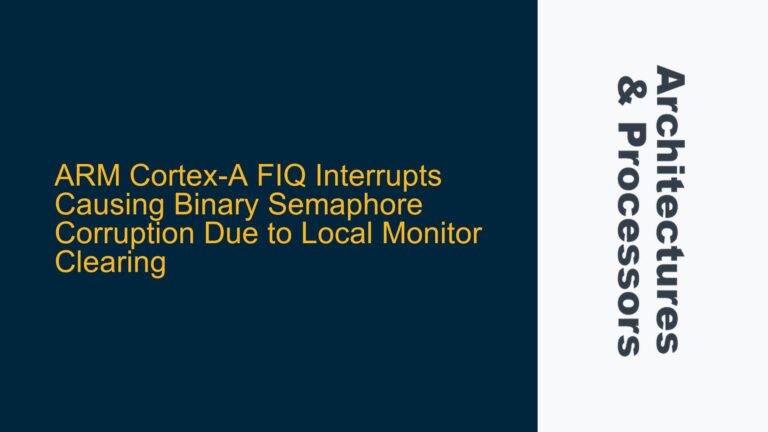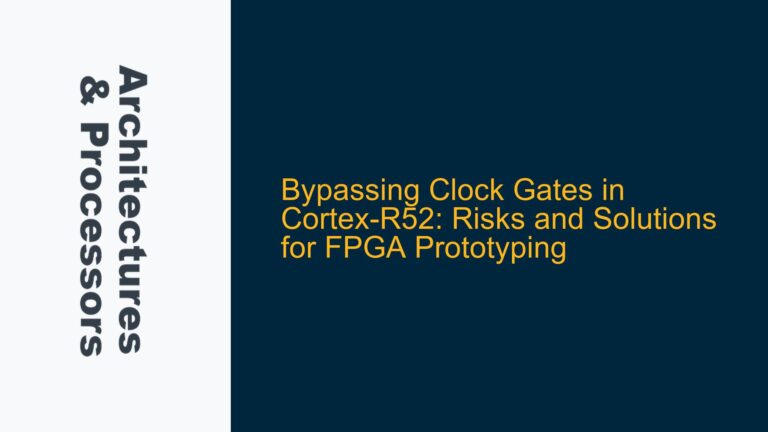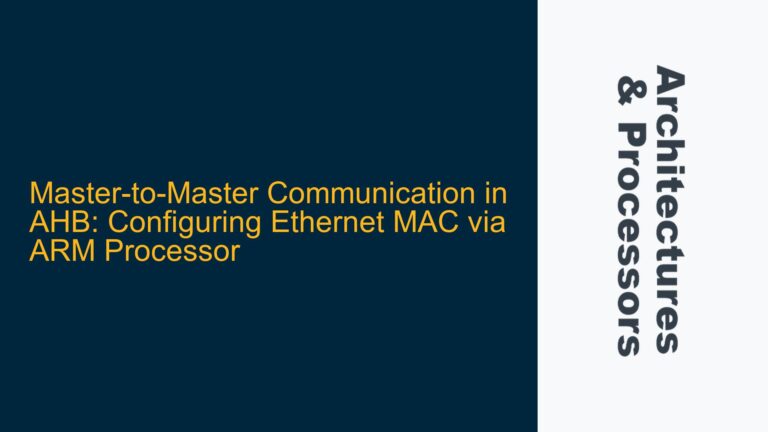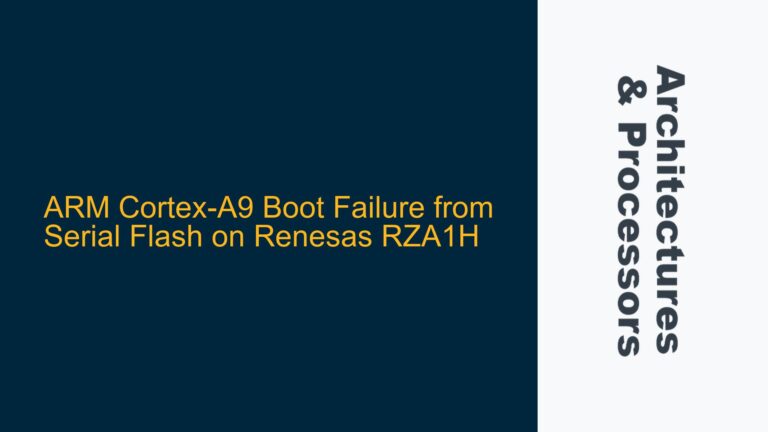AARCH64 Exception Level Switch from EL1 to EL0 Causing Synchronous Abort
Synchronous Abort During EL1 to EL0 Transition Due to MMU Misconfiguration The core issue revolves around a synchronous abort exception occurring when attempting to switch from Exception Level 1 (EL1) to Exception Level 0 (EL0) on an AARCH64-based system, specifically while testing a custom kernel on QEMU emulating a Raspberry Pi 3. The transition from…
